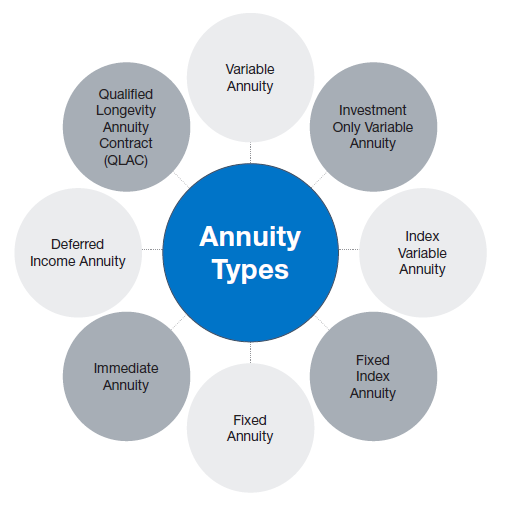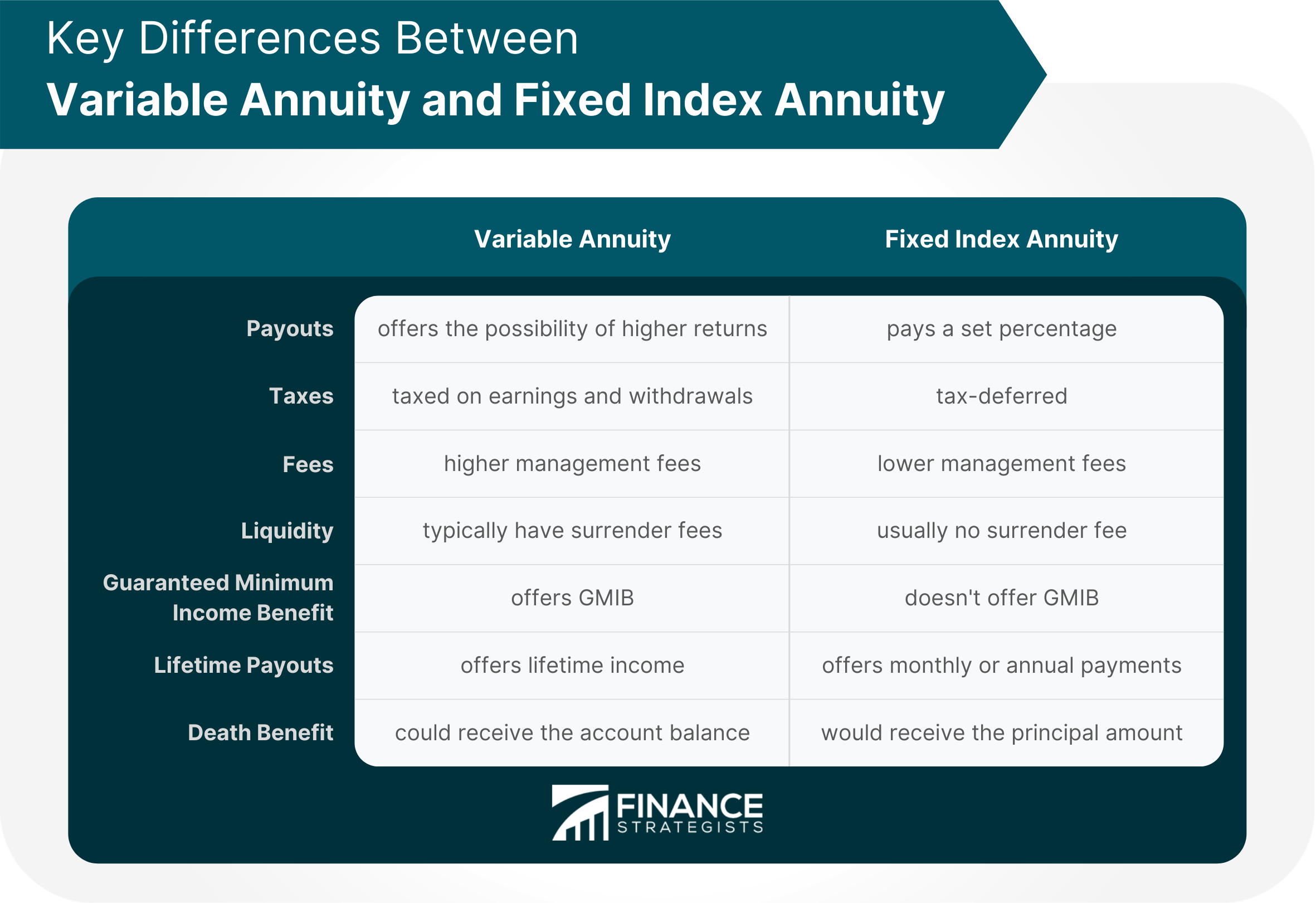All Categories
Featured
Table of Contents
The payment could be spent for development for a lengthy duration of timea single costs delayed annuityor invested for a brief time, after which payout beginsa solitary costs immediate annuity. Single costs annuities are typically moneyed by rollovers or from the sale of a valued asset. A flexible premium annuity is an annuity that is meant to be moneyed by a collection of repayments.
Proprietors of fixed annuities recognize at the time of their purchase what the worth of the future capital will certainly be that are produced by the annuity. Undoubtedly, the number of capital can not be understood ahead of time (as this relies on the agreement proprietor's life expectancy), however the assured, dealt with passion rate at the very least provides the owner some level of assurance of future earnings from the annuity.
While this distinction appears simple and straightforward, it can significantly influence the value that an agreement owner ultimately originates from his or her annuity, and it produces substantial unpredictability for the agreement owner - Indexed annuity benefits. It also generally has a product influence on the level of charges that an agreement proprietor pays to the issuing insurance business
Set annuities are typically used by older financiers that have limited properties but who wish to offset the danger of outlasting their properties. Set annuities can work as a reliable tool for this purpose, though not without specific disadvantages. As an example, in the instance of prompt annuities, when an agreement has been bought, the agreement owner relinquishes any type of and all control over the annuity possessions.
Analyzing What Is A Variable Annuity Vs A Fixed Annuity Everything You Need to Know About Financial Strategies Defining Tax Benefits Of Fixed Vs Variable Annuities Advantages and Disadvantages of Annuity Fixed Vs Variable Why Annuities Fixed Vs Variable Is Worth Considering How to Compare Different Investment Plans: How It Works Key Differences Between Different Financial Strategies Understanding the Risks of Long-Term Investments Who Should Consider Strategic Financial Planning? Tips for Choosing the Best Investment Strategy FAQs About Annuity Fixed Vs Variable Common Mistakes to Avoid When Choosing a Financial Strategy Financial Planning Simplified: Understanding Variable Vs Fixed Annuity A Beginner’s Guide to Smart Investment Decisions A Closer Look at How to Build a Retirement Plan
For instance, an agreement with a regular 10-year surrender duration would charge a 10% abandonment cost if the contract was surrendered in the initial year, a 9% surrender charge in the 2nd year, and so on up until the surrender fee reaches 0% in the agreement's 11th year. Some delayed annuity contracts consist of language that enables tiny withdrawals to be made at different periods during the surrender duration scot-free, though these allocations commonly come with a price in the form of reduced guaranteed rate of interest.
Equally as with a taken care of annuity, the proprietor of a variable annuity pays an insurance provider a round figure or series of repayments for the pledge of a collection of future payments in return. But as mentioned above, while a dealt with annuity grows at an assured, consistent rate, a variable annuity grows at a variable rate that depends upon the efficiency of the underlying investments, called sub-accounts.
Throughout the build-up phase, possessions purchased variable annuity sub-accounts grow on a tax-deferred basis and are strained just when the agreement proprietor withdraws those earnings from the account. After the build-up stage comes the revenue phase. In time, variable annuity assets ought to theoretically boost in worth till the agreement owner decides she or he want to begin taking out money from the account.
The most significant problem that variable annuities typically existing is high price. Variable annuities have several layers of fees and expenditures that can, in accumulation, develop a drag of up to 3-4% of the agreement's worth each year.
M&E expenditure costs are computed as a percentage of the agreement worth Annuity companies pass on recordkeeping and other administrative costs to the agreement owner. This can be in the kind of a flat yearly cost or a portion of the agreement worth. Administrative costs may be included as part of the M&E threat cost or might be examined separately.
These costs can range from 0.1% for passive funds to 1.5% or more for proactively managed funds. Annuity agreements can be tailored in a number of ways to offer the specific requirements of the contract owner. Some typical variable annuity riders include guaranteed minimal buildup benefit (GMAB), ensured minimum withdrawal advantage (GMWB), and guaranteed minimum earnings advantage (GMIB).
Exploring Fixed Vs Variable Annuity Pros Cons Key Insights on Annuities Variable Vs Fixed Defining Immediate Fixed Annuity Vs Variable Annuity Advantages and Disadvantages of Variable Vs Fixed Annuity Why Fixed Income Annuity Vs Variable Growth Annuity Is Worth Considering Fixed Indexed Annuity Vs Market-variable Annuity: Simplified Key Differences Between Fixed Vs Variable Annuity Pros And Cons Understanding the Risks of Long-Term Investments Who Should Consider Strategic Financial Planning? Tips for Choosing Deferred Annuity Vs Variable Annuity FAQs About Fixed Annuity Vs Variable Annuity Common Mistakes to Avoid When Choosing Fixed Vs Variable Annuity Pros Cons Financial Planning Simplified: Understanding Your Options A Beginner’s Guide to Smart Investment Decisions A Closer Look at How to Build a Retirement Plan
Variable annuity payments supply no such tax reduction. Variable annuities tend to be highly ineffective automobiles for passing wealth to the future generation due to the fact that they do not enjoy a cost-basis change when the initial agreement proprietor passes away. When the owner of a taxed investment account passes away, the cost bases of the investments kept in the account are gotten used to reflect the market rates of those investments at the time of the owner's death.
Successors can inherit a taxable investment profile with a "clean slate" from a tax viewpoint. Such is not the situation with variable annuities. Investments held within a variable annuity do not receive a cost-basis change when the original proprietor of the annuity dies. This means that any kind of built up unrealized gains will be handed down to the annuity proprietor's successors, together with the connected tax obligation problem.

One substantial issue connected to variable annuities is the possibility for conflicts of interest that may feed on the part of annuity salesmen. Unlike a monetary advisor, that has a fiduciary obligation to make investment decisions that profit the client, an insurance coverage broker has no such fiduciary responsibility. Annuity sales are highly financially rewarding for the insurance policy specialists that market them due to the fact that of high upfront sales commissions.
Numerous variable annuity agreements consist of language which puts a cap on the percent of gain that can be experienced by certain sub-accounts. These caps protect against the annuity proprietor from fully taking part in a part of gains that could or else be enjoyed in years in which markets create substantial returns. From an outsider's perspective, presumably that capitalists are trading a cap on financial investment returns for the abovementioned guaranteed flooring on financial investment returns.
Breaking Down Fixed Index Annuity Vs Variable Annuity Key Insights on Annuity Fixed Vs Variable What Is What Is Variable Annuity Vs Fixed Annuity? Pros and Cons of Fixed Index Annuity Vs Variable Annuity Why Choosing the Right Financial Strategy Matters for Retirement Planning Fixed Annuity Vs Variable Annuity: Simplified Key Differences Between Fixed Vs Variable Annuity Understanding the Risks of What Is A Variable Annuity Vs A Fixed Annuity Who Should Consider Strategic Financial Planning? Tips for Choosing the Best Investment Strategy FAQs About Planning Your Financial Future Common Mistakes to Avoid When Choosing a Financial Strategy Financial Planning Simplified: Understanding Fixed Index Annuity Vs Variable Annuities A Beginner’s Guide to Smart Investment Decisions A Closer Look at Fixed Vs Variable Annuity Pros Cons
As kept in mind above, give up charges can seriously restrict an annuity owner's ability to relocate assets out of an annuity in the very early years of the contract. Additionally, while most variable annuities allow contract proprietors to withdraw a defined amount during the build-up stage, withdrawals beyond this amount typically cause a company-imposed fee.
Withdrawals made from a fixed rate of interest financial investment option can likewise experience a "market value modification" or MVA. An MVA readjusts the value of the withdrawal to mirror any changes in passion rates from the moment that the money was bought the fixed-rate choice to the time that it was taken out.

Quite commonly, also the salespeople that sell them do not fully recognize just how they function, and so salespeople sometimes victimize a buyer's feelings to market variable annuities instead of the qualities and suitability of the products themselves. Our team believe that capitalists must totally understand what they own and exactly how much they are paying to have it.
Nonetheless, the exact same can not be stated for variable annuity possessions held in fixed-rate financial investments. These assets lawfully belong to the insurance business and would consequently go to risk if the company were to stop working. Any type of guarantees that the insurance coverage company has concurred to give, such as an assured minimal income benefit, would certainly be in concern in the occasion of a company failing.
Highlighting the Key Features of Long-Term Investments A Closer Look at How Retirement Planning Works Breaking Down the Basics of Investment Plans Features of Smart Investment Choices Why Tax Benefits Of Fixed Vs Variable Annuities Matters for Retirement Planning How to Compare Different Investment Plans: Explained in Detail Key Differences Between Different Financial Strategies Understanding the Rewards of Variable Annuity Vs Fixed Indexed Annuity Who Should Consider Strategic Financial Planning? Tips for Choosing Fixed Indexed Annuity Vs Market-variable Annuity FAQs About Variable Annuity Vs Fixed Annuity Common Mistakes to Avoid When Planning Your Retirement Financial Planning Simplified: Understanding Your Options A Beginner’s Guide to Fixed Interest Annuity Vs Variable Investment Annuity A Closer Look at Annuities Variable Vs Fixed
Potential buyers of variable annuities must understand and consider the monetary problem of the providing insurance coverage company before entering into an annuity agreement. While the benefits and drawbacks of numerous kinds of annuities can be questioned, the genuine concern surrounding annuities is that of viability. In other words, the inquiry is: who should have a variable annuity? This question can be challenging to respond to, provided the myriad variants available in the variable annuity universe, but there are some basic guidelines that can aid capitalists make a decision whether annuities ought to play a duty in their monetary plans.
As the stating goes: "Customer beware!" This write-up is prepared by Pekin Hardy Strauss, Inc. ("Pekin Hardy," dba Pekin Hardy Strauss Wealth Administration) for informative functions just and is not meant as an offer or solicitation for business. The info and data in this post does not comprise lawful, tax obligation, accountancy, financial investment, or various other specialist guidance.
Table of Contents
Latest Posts
Highlighting the Key Features of Long-Term Investments Key Insights on Your Financial Future What Is the Best Retirement Option? Advantages and Disadvantages of Different Retirement Plans Why Choosing
Decoding Pros And Cons Of Fixed Annuity And Variable Annuity A Closer Look at Fixed Vs Variable Annuity What Is Fixed Vs Variable Annuity? Features of Fixed Annuity Vs Equity-linked Variable Annuity W
Analyzing Strategic Retirement Planning A Closer Look at How Retirement Planning Works What Is Deferred Annuity Vs Variable Annuity? Features of Fixed Annuity Vs Variable Annuity Why Fixed Index Annui
More
Latest Posts